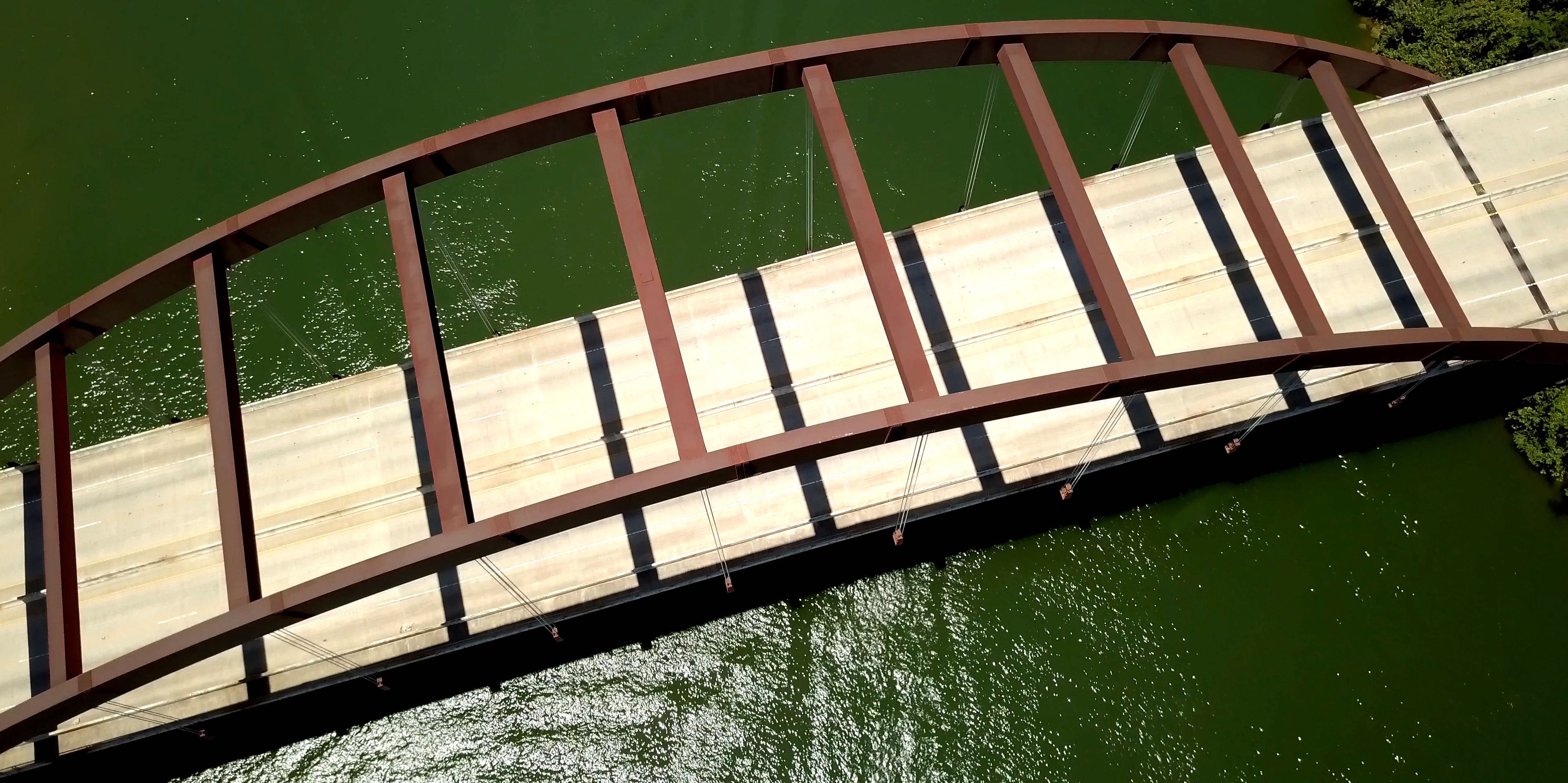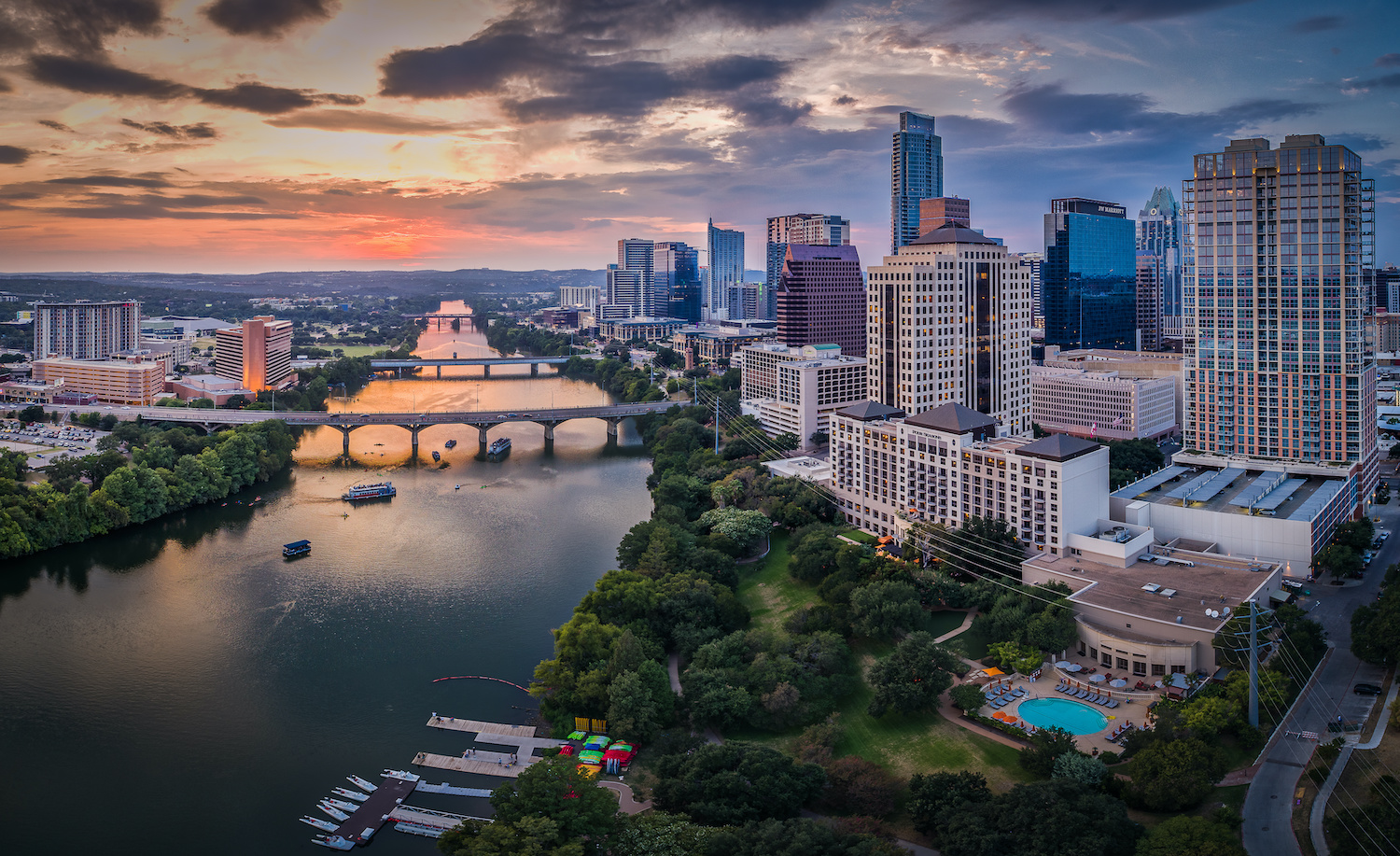Austin in 100 Years

One of my favorite poets, Billy Collins, wrote a poem, “To a Stranger Born in Some Distant Country Hundreds of Years from Now,” in response to a comment from a colleague who stated that she writes “poems for a stranger who will be born in some distant country hundreds of years from now.” In his poem, Collins reveals that he can’t conceive what these future strangers will be like, but he concludes that the people of the future, just as the people of today, will not like wet dogs.
Water planning also requires thinking about strangers in the future. With statewide water planning, Texas peers 50 years into the future. Austin—dried awake by the 2011 to 2015 drought—doubled down to peer ahead 100 years. O Austinites of the future! What will Austin look like then? Will Austin still be the Live Music Capital of the World? Will Austin still be fighting with San Antonio over breakfast tacos? Will there be enough water?
On this latter question, I was fortunate to join Austin’s Water Forward Task Force. The task force is a city-created, citizen-led stakeholder group charged with helping Austin Water develop an ambitious 100-year water plan. Not only would Austin peer an additional half a century into the future beyond the state water-planning horizon, but it would also explicitly include climate change in its outlook.
Since I joined the planning process halfway through, Austin Water kindly sat me down to bring me up to speed on the process, and there were several somewhat shocking revelations. The first revelation concerned population. Conservatively, Austin estimates a population of 4 million Austinites in 2021. (“We’re going to need a bigger taco truck.”) Four million!
The second revelation concerned the scale of the current water supply. In the mid-1990s, Austin entered into a $100-million agreement with the Lower Colorado River Authority to acquire senior water rights from downstream rice farmers. Assuming that the future climate looks like the past (what the cool kids call “stationarity”), the Highland Lakes would provide enough water for a growing Austin through 2115 (although there would likely be some nail-biting droughts along the way). That’s amazing. The third revelation concerned climate change. With no additional water supplies or conservation, climate change would dry up the Highland Lakes starting in the second half of this century.
Houston (well, actually, in this case, Austin): We have a problem.
Austin responded by developing a water plan focusing on local resources rather than importing water (which is driven, in part, by rural-urban equity and environmental issues).
Accordingly, Austin Water and the task force employed One Water concepts—using the urban environment as a source of water. This includes rainwater, stormwater, greywater, and condensate harvesting; distributed wastewater reuse; and the deliciously-named sewer mining (scalping sewage from the sewer main, treating it, and then using it locally for irrigation, toilet flushing, cooling water, or industrial purposes).
Austin is also leveraging its neighbors’ experiences, including San Antonio with its aquifer storage and recovery program (where excess water from one source is stored underground for later use) and brackish groundwater desalination plant. Austin is still counting on the Lower Colorado River Authority to provide a significant supply, and plans to coordinate with other regional partners to meet future water supply needs. (Greater Austin could easily add up to 8 million people in 100 years).
As Circle of Blue’s article, “Three Thirsty Texas Cities Are Global Leaders in Water Innovation” notes, Austin is already putting its water where its mouth is with rainwater and condensate harvesting at the new central library.

One hundred years is a long time (it’s, like, a century, dude!). So some might question the value of looking that deep into the crystal ball. In Austin’s case, it was a valuable experience.
Based on what we gleaned
(1) we don’t have to worry (too much) about climate change over the next 50 years,
(2) we do have to worry about climate change in the latter half of the century,
(3) we can meet our water needs over the next 100 years, and
(4) we need to start implementing the water plan now to ensure Austin’s resiliency now and in the future.
I suspect Billy Collins is right: the people of the future won’t like wet dogs. My guess is that the people of the future, like the people of today, will like water, even if water sometimes leads to wet dogs.
Robert E. Mace is the executive director of The Meadows Center for Water and the Environment and professor of practice in the geography department, Texas State University, where he leads efforts to better understand water and the environment. Robert has a B.S in geophysics, an M.S. in hydrology from the New Mexico Institute of Mining and Technology, and a Ph.D. in hydrogeology from The University of Texas at Austin.
Editor's note: The views expressed by contributors to the Cynthia and George Mitchell Foundation's blogging initiative are those of the author and do not necessarily represent the views of the foundation. The foundation works as an engine of change in both policy and practice, supporting high-impact projects at the nexus of environmental protection, social equity, and economic vibrancy. Follow the Mitchell Foundation on Facebook and Twitter, and sign up for regular updates from the foundation.

Hide Full Index
Show Full Index
View All Blog Posts